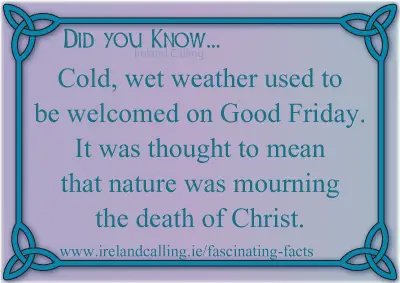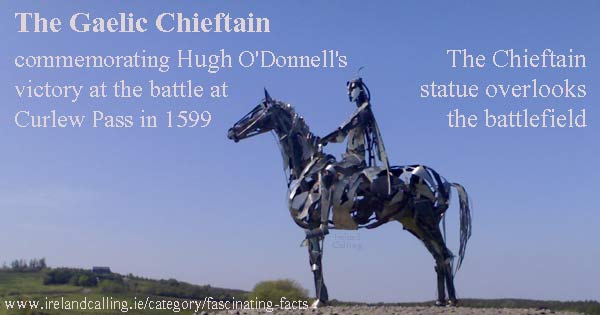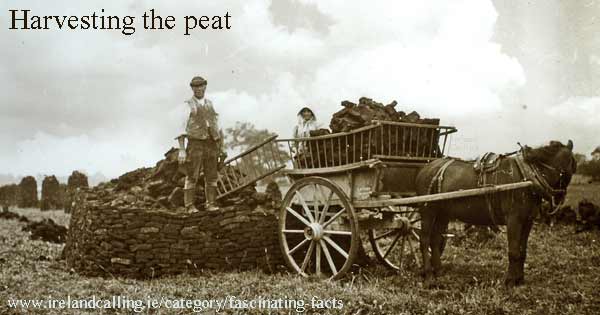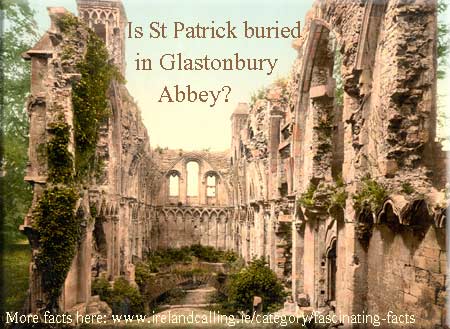According to legend, St Patrick may have been buried in England rather than Ireland. It is said that he may have moved to Glastonbury towards the end of his life and been buried there. The Chapel of St Patrick is part of Glastonbury Abbey.
* * *
Ireland became officially known as the Republic of Ireland on Easter Monday April 18, 1949.
![]()
The fermenting vessel at Guinness can ferment 2,304,000 pints in just one brewing.
* * *

* * *
The River Bann is the longest river in Northern Ireland. Every Spring 20 million eels make their way to the river to breed.
* * *

Red Hugh O’Donnell was a leader in the ‘Nine Years War’ (from 1595 to 1603) – a rebellion against English occupation.
He was leader of the O’Donnell clan and allied with the O’Neill clan against the English.
The Battle of Curlew Pass was a major victory for the Irish. The English suffered heavy losses when they were ambushed while they marched through the Curlew Mountains.
“The Gaelic Chieftain”, a modern sculpture commemorating O’Donnell’s victory at the battle at Curlew Pass in 1599.
![]()
In Ireland, boys born on Easter Monday were destined to have a successful career in the church. They would have been expected to reach a high office.
* * *
John Ford was evicted from a small holding in Ballinascarty, Co Cork in 1847. He left Ireland for America. His son Henry founded the Ford Corporation of America.
![]()
Dublin busses get their numbers starting in the city centre and moving outwards in a clockwise direction. It is the same system used back in the days of horse drawn trams.
* * *

Peat (turf) is a brown material of partially decayed vegetation or organic matter. It occurs in acidic, boggy ground in natural areas called peatlands or mires, where there is no oxygen. It is dried and used in gardening and as fuel.

All images copyright Ireland Calling
